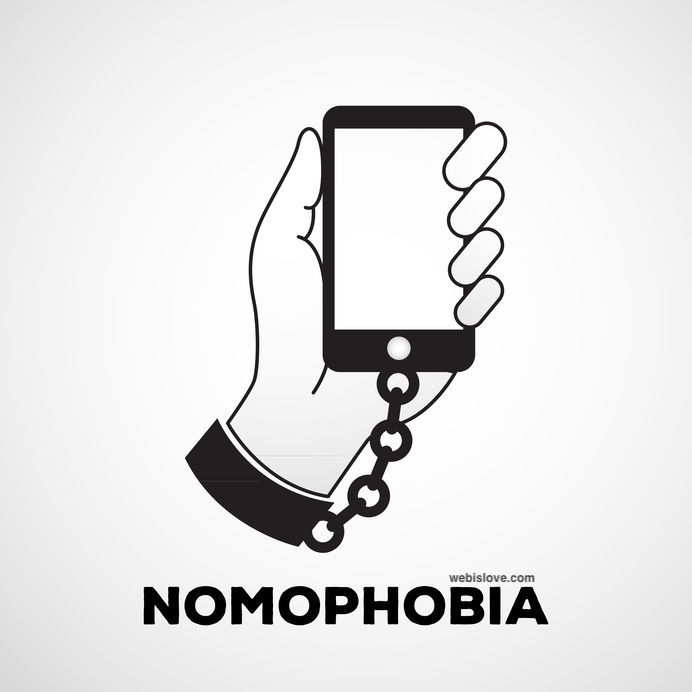
The tech titans at Silicon Valley have forever changed how the world uses technology. They’re constantly pursuing ways to merge our daily activities with smarter devices, yet most of these giants are known to restrict screentime in their home. Because they designed it, they were aware new technology pose a risk of nomophobia.
In an interview with the Mirror, a few years back, Bill Gates revealed that his kids had tech-free childhoods. They were well into their teens before they had smart phones – and even then, screentime was heavily regulated.
A close inspection of the way tech giants raise their kids will show you that most are aware of the dangers smart mobile phones present. Even Reddit’s founder, Alexis Ohanian, plans on raising his and Serena William’s kid with screentime restrictions. And yet these tech giants are responsible for designing increasingly addictive technology. It reeks of irony.
It’s like pharmaceutical companies who manufacture opiates. The government understands the ramifications of their drugs, so place restrictive regulations on them, to minimize the opioid crisis. Is technology creating a similar problem? Of course unlike opiates, no one (that we know of) has died of nomophobia. But is it affecting the lives of people, differently but no less dangerously? Technology, like opiates, has its merits. But are there dangers we aren’t attentive to? Keep reading.
What is Nomophobia?
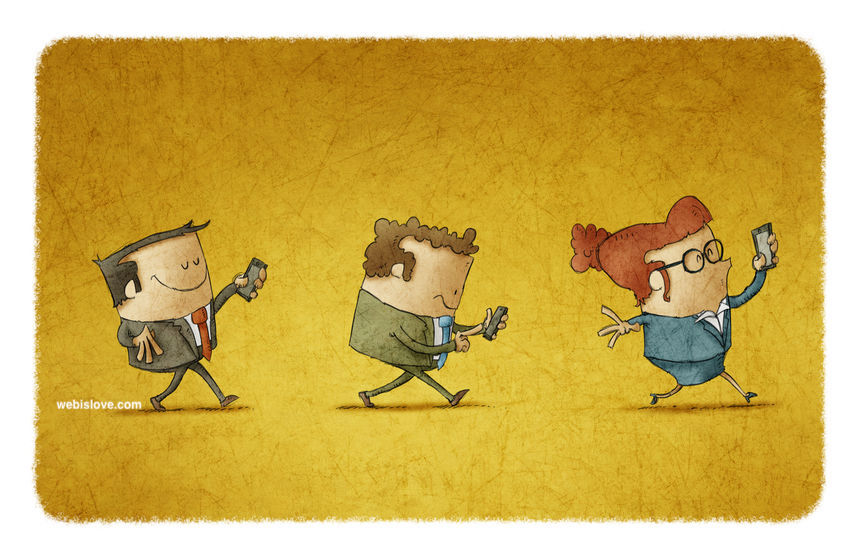
By now, it’s not a surprising fact that people LOVE their mobile phones. What’s surprising is how psychologically attached people have become to these mobile devices. So attached that they develop an irrational fear of being without their phones. In other words, people are ascribing a greater importance of mobile phones to their lives than anticipated, hence the term NO-MObile-PHOne-phoBIA.
The term was actually coined in 2008 by YouGov, in the United Kingdom, while researching if anxiety disorders were caused by mobile phone overuse. YouGov found that 53% of the British population suffered some form of irrational anxiety when either their batteries or credit ran out, or when they had no network coverage.
It may seem ridiculous to treat nomophobia as a serious illness, but have you ever seen the fear people have when their phone’s not charged. A person can have several mini hearts when their phone falls inside water or on a pavement? And it isn’t necessarily the cost they’re worried about. Sure most premium phones are expensive, but we live in an information age, and it’s the loss of this information, more than any other thing, causes panic.
How Does it Affect a Person’s Daily Life?
Human beings are social creatures. And as social creatures, we’re driven by the need to create social bonds. Social media has taught us that we can connect with anyone, anywhere, through our phones. For those who have social anxiety, this can seem like a pretty good deal. The problem is when the mind becomes attached to the social interaction offered through these devices, especially to the detriment of physical social interactions.
Images of people eating together, while still focusing on their phones spring to mind. This is so prevalent, most of those tech titans you saw earlier place phone bans at meal times.
A person with nomophobia can be found taking careful, conscious steps to ensure they aren’t without their phones. Going camping to observe nature? Pack a solar panel to keep phones charged, plus an extra power bank – just in case. Need to travel to a location without broadband? That trip suddenly becomes meaningless. If people with nomophobia took care to plan their futures the way they planned for a power disruption, life would be so much more fruitful and innovative.
To a person with nomophobia, a buzzing phone takes precedence over almost everything else happening at the moment, plus the conversation you’re having with them. Even when they try to be polite by dismissing the urge to look at their buzzing device – because it is a common pet peeve – you can almost see their souls leaving the conversation. Bottom line? This phobia can negatively affect people’s lives.
Nomophobia Definition
Excessive mobile phone dependency, triggered by the fear of being without it.
Although the medical community hasn’t provided an official definition for nomophobia, many experts agree it meets the Diagnostic and Statistical Manual of Mental Disorders (DSM-V) criteria of a phobia. These are:
- Unreasonable and excessive anxiety or fear associated with the situation or object
- Exposure to feared situation triggers immediate anxiety
- The person knows his/her fear is irrational
- Carefully avoiding the situation, including going as far as disrupting relationships and ordinary routines to prevent the situation.
Nomophobia fits every single one of these criteria. People with it certainly become anxious, and even go to great lengths to ensure their phones stay put. The reason medical professionals are hesitant to give it an official DSM-V diagnosis is because the book also states that the anxiety triggered in nomophobia must have no other plausible causes.
The lines become a little blurry here, considering Separation Anxiety Disorder – a DSM-V diagnosis, could also explain nomophobia. Experts who argue against making it official, say the condition is already well know. What’s new is the extremely digital environment the world now finds itself in.
Regardless of what it’s officially called, whether the argument is that nomophobia is driven by a mobile phone addiction, separation anxiety, or just a phobia, everyone agrees that being glued to your phone has far reaching consequences.
Symptoms of Nomophobia
As with all known phobias, nomophobia manifests itself through several physical and mental symptoms like: Perspiration, trembling, anxiety, breathing alterations, agitation, disorientation and tachycardia. Here’s how these symptoms manifest themselves.
Anxiety.
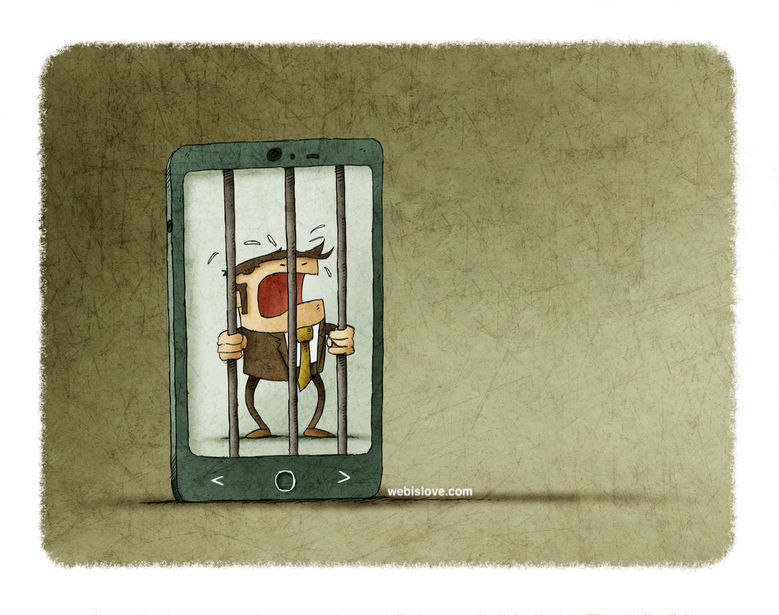
Full fledge panic attacks triggered by anxiety are commonly experienced by people with nomophobia. Their dependency would have to be extremely high, but it isn’t abnormal for it to happen. Symptoms like perspiration, quivers and even premature mini heart attacks can be observed.
Inappropriate use of phones.
Work place productivity has been hit the hardest when it comes to phone addiction. It isn’t just about receiving calls or responding to text messages, the office is the place co-workers send and receive the latest memes of Grumpy cat.
Prioritize phones over physical relationships.
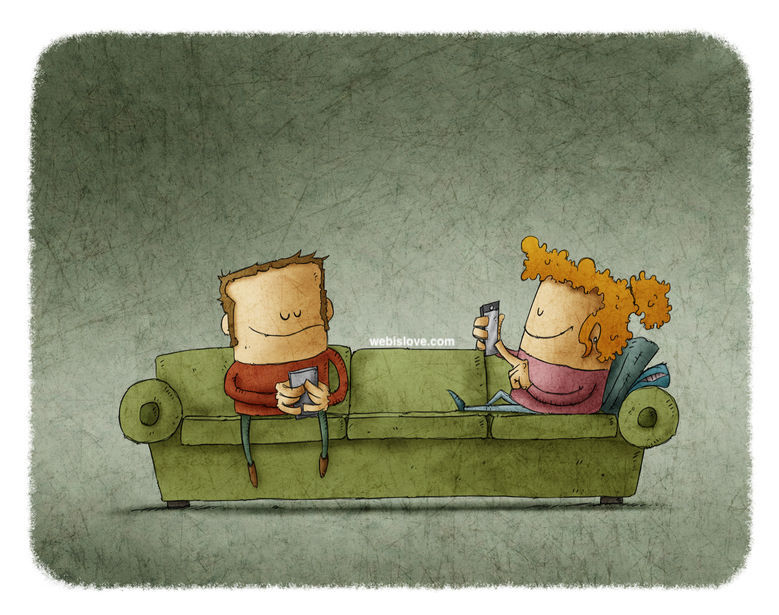
Many a friendship or date have been ruined simply because a nomophobe couldn’t be bothered to respond to conversations. Some even go on to become loners, and generally have trouble keeping healthy relationships.
They’re never disconnected. Some even have trouble sleeping without their phones close to them.
Most people with nomophobia realize they have a problem. Whether they’re looking to cure it is another matter.
How to Reduce/Treat Nomophobia
The more chronic the phone addiction, the more open a person should be to seeking professional help. However, these steps can be taken to reduce phone dependency, even amongst non addicts.
Switch to Bigger Devices
The portability of a mobile phone makes it easier to get addicted. Get the same apps from your phone on a tablet or laptop, and rely solely on the bigger device.
Very rarely will you find tech addicts shuffling big screens around. Moreover using an iPad at a dinner table just looks ridiculous.
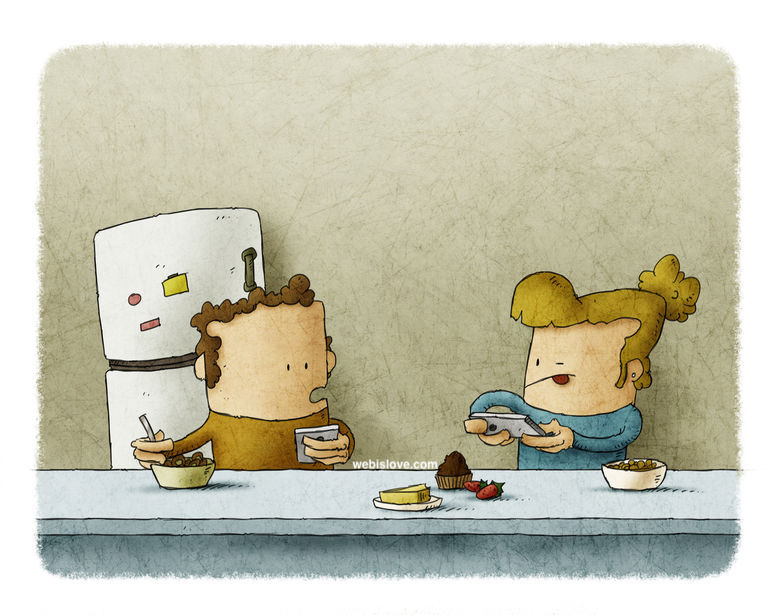
Delete Addictive Apps
Like it or not, the tech industry is going to keep developing fun, addictive applications. It’s your responsibility to police yourself, and your family. If an app is taking time away from family, friends, or chores, then it’s time for it to go. Limiting usage can be tricky, so a clean cut is more effective.
Practice Leaving your Phone in Other Rooms
Not saying you should dump it and ignore all calls, just move about without your phone attached to you. You can do this in incremental time frames, say leave it for 20 minutes each day for a whole week, then set a new target for the next week.
Track Your Usage
If you find deleting apps too extreme, install one of those apps that keeps track of phone usage. Seeing is believing, and so seeing that you’ve been on Instagram for 3 straight hours can force you to make life changes. There are other phone features designed to make your phone less appealing, for example iPhone users can switch to gray scale – considered less appealing than full color.
Get an Alarm
People who sleep with their phones excuse such behavior by claiming its because of their phone’s alarm. Do yourself this favor, buy an actual alarm clock and keep it next to you, instead of your phone. This way, you don’t wake up with your phone in hand, reading the news and responding to emails even before getting out of bed.
Understand the Difference Between Real Life and Virtual Life
At the core of nomophobia is the inability to differentiate between real and virtual life. Having 1000 Facebook friends located in multiple countries and zero real life friends is not the definition of social. The people you interact with online should be a small part of a larger, more fulfilling real life. Besides, Instagram filters are proof that people pretend to be who they’re not while online. The last thing you want to do is base your reality on fakes. It’s crippling.
Societal Preventive Measures
The techniques discussed above are effective when addiction is already firmly in place. Perhaps a more preventive measure, like those seen below would be more effective in the long run.
Parental Responsibility
If you have kids, be like those tech giants. Motivate your kids to look for fun outside smartphones by organizing engaging activities they can attend – so they have social interaction. Encourage them to spend time being creative without the aid of technology. Most importantly, create a value system that teaches them not to be overly dependent on technology.
Government Policy
If the society considers nomophobia a serious enough condition, government can enact laws that limit phone use, the same way government regulates opioids. For example, a restriction can be placed on Telecom companies. They’d place mobile setting restrictions, so people don’t exceed their limit.
Education
Many schools have restrictions of phone use during classes, but more can be done. Aside from technophobes – who have always had irrational fears about technology, so had conspiracy theories ready and waiting even before nomophobia became a thing – and Silicon Valley, people generally aren’t aware of mobile phone addiction. Awareness programs can be done to enlighten the public about the risks of this mental disorder.
Nomophobia Statistics 2018
Statistics make phenomena real. It’s easier to comprehend how dangerous a phenomenon is if studies and surveys have been carried out. Here are some bewildering facts about nomophobia.
It creates musculoskeletal problems.
A study conducted amongst university students, between the ages of 18 and 25 years showed that 54% developed some form of musculoskeletal problem, including text thumbs and neck syndromes.
An Indian study found that females are more likely to have nomophobia than men.
In the survey, 44% of the female participants were addicted, while only 38.8% of the males were.
Studies by McCombs School of Business showed that our brain chemistry’s changes due to easy access to information from mobile phones. And that having phones out of reach, even just out of view, can reduce our brain’s capacity.
65% of Americans keep their phones beside them before going to bed, while a bewildering 34% answer phone calls during intimate moments.
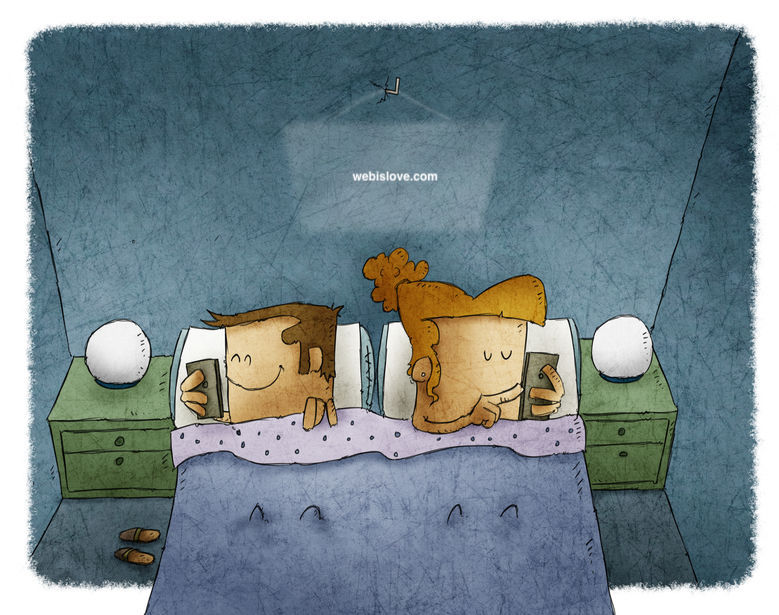
Internet rehabilitation centers are a thing in China, and one girl reportedly murdered her parent for checking her into a facility.
One study – with 403 participants – discovered that 6% spent more than 10 hours on their phones in a day, while about 40% spent at least 4 hours a day on their phones.
The “spend a week without your phone” challenge is more popular and difficult than ever, because of the Fear Of Missing Out (FOMO). If you’re curious about your nomophobia diagnosis, give it a try.
The wheels of innovation never stop turning at Silicon valley, hence developers aren’t going to stop creating addictive apps.
Facebook, which everyone thought would be gone by now, still finds a way to grab people’s attention.
The Commander in Chief of the United States is also the Commander in tweet.
The average person thinks they give off a “busy” vibe if people see them using their phones, so spend unnecessary time doing nothing.
Given our society’s increasing reliance on mobile phones, nomophobia might be this generation’s biggest non-drug related addiction.
Don’t let it control you.
Author bio:
Liam Nason (Not Neeson) is a writer, social media expert and self awareness guru. He believes the human mind is the only thing keeping AI from taking over the world, and so it should be consciously guarded.
References:
NOMOPHOBIA: NO MObile PHone PhoBIA
Smartphone Addiction Now Has A Clinical Name
In China, there are military-style boot camps for internet addiction rehabilitation
NOMOPHOBIA: Detection and Analysis of Smartphone Addiction in Indian Perspective

Leave a Reply